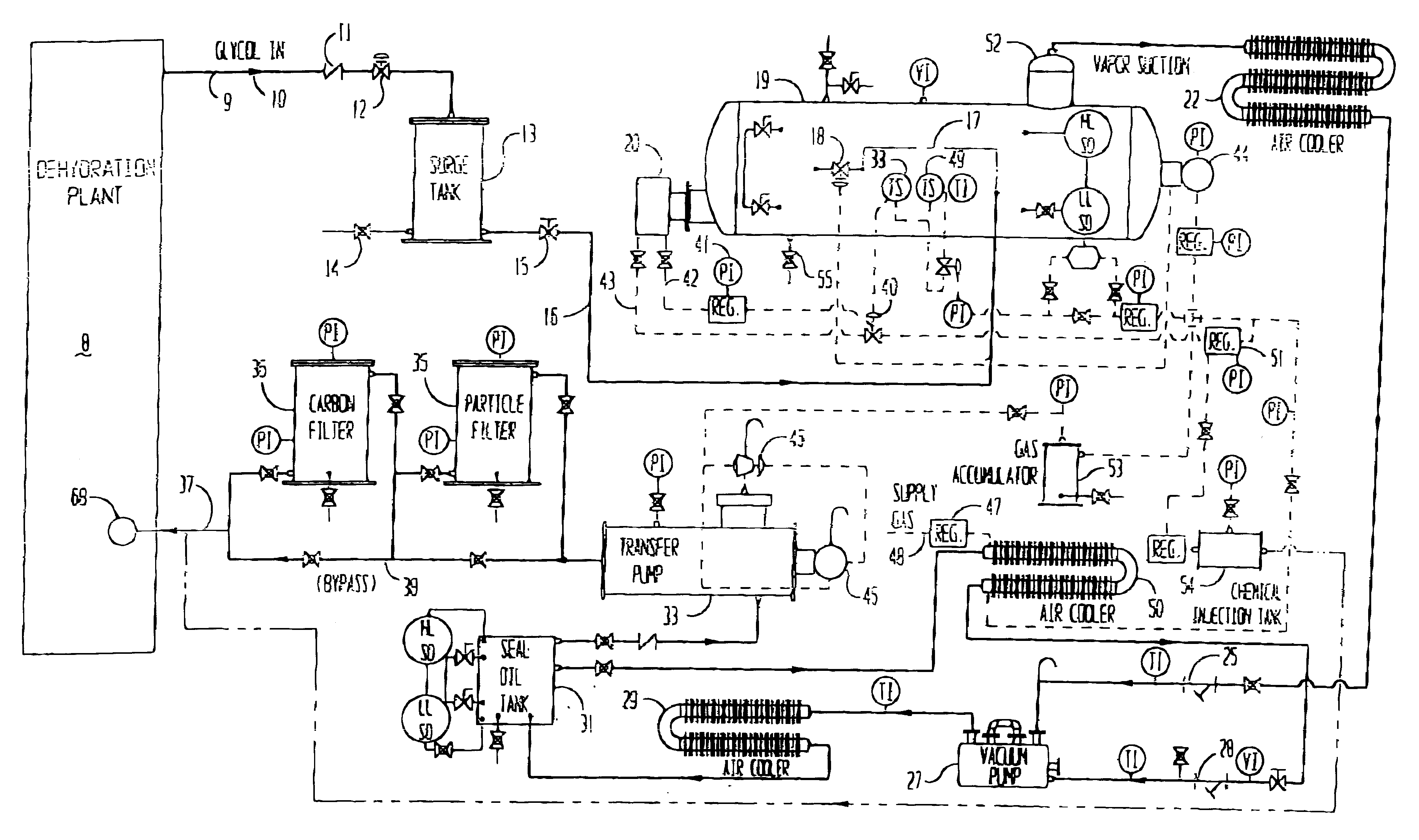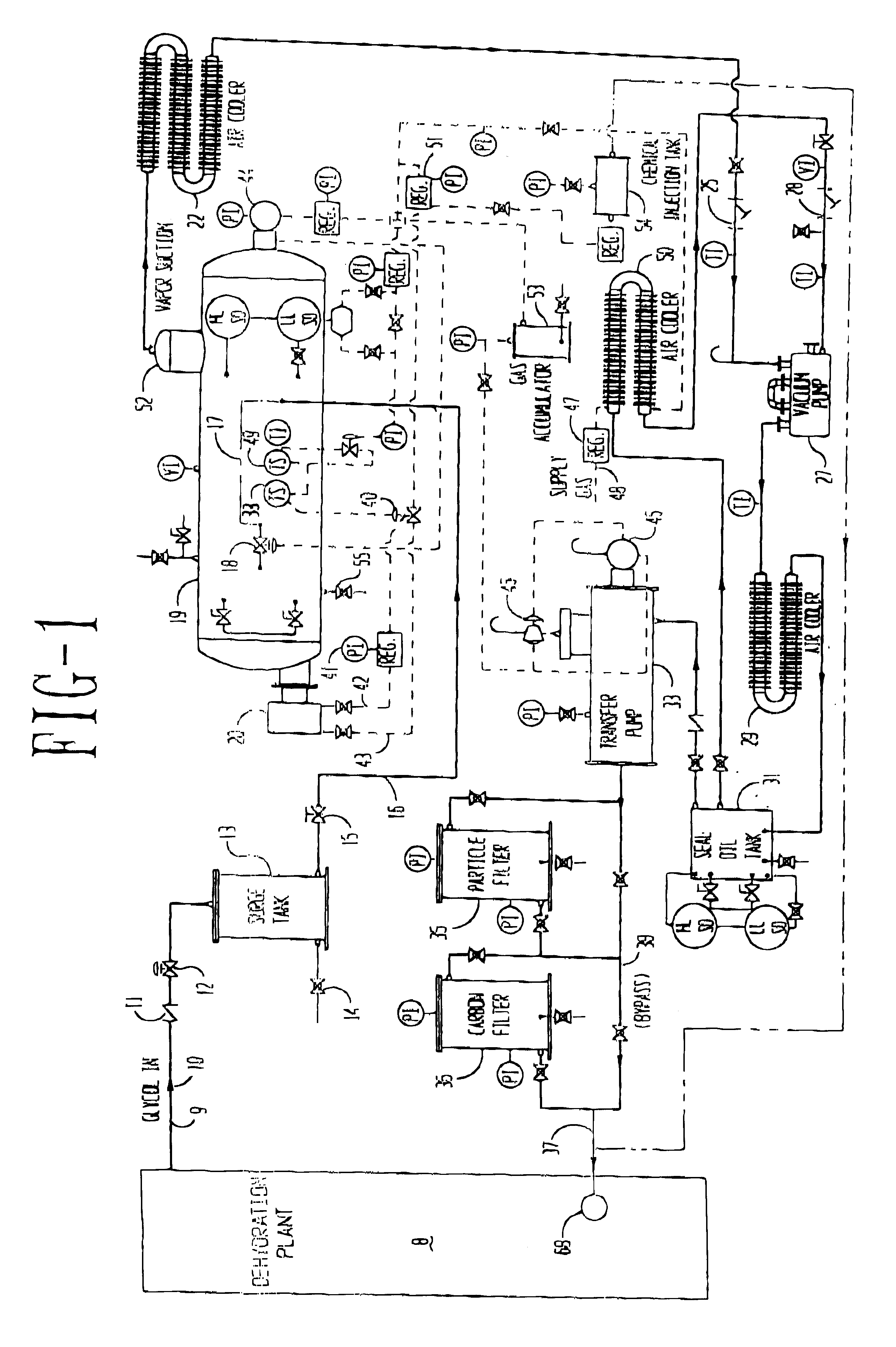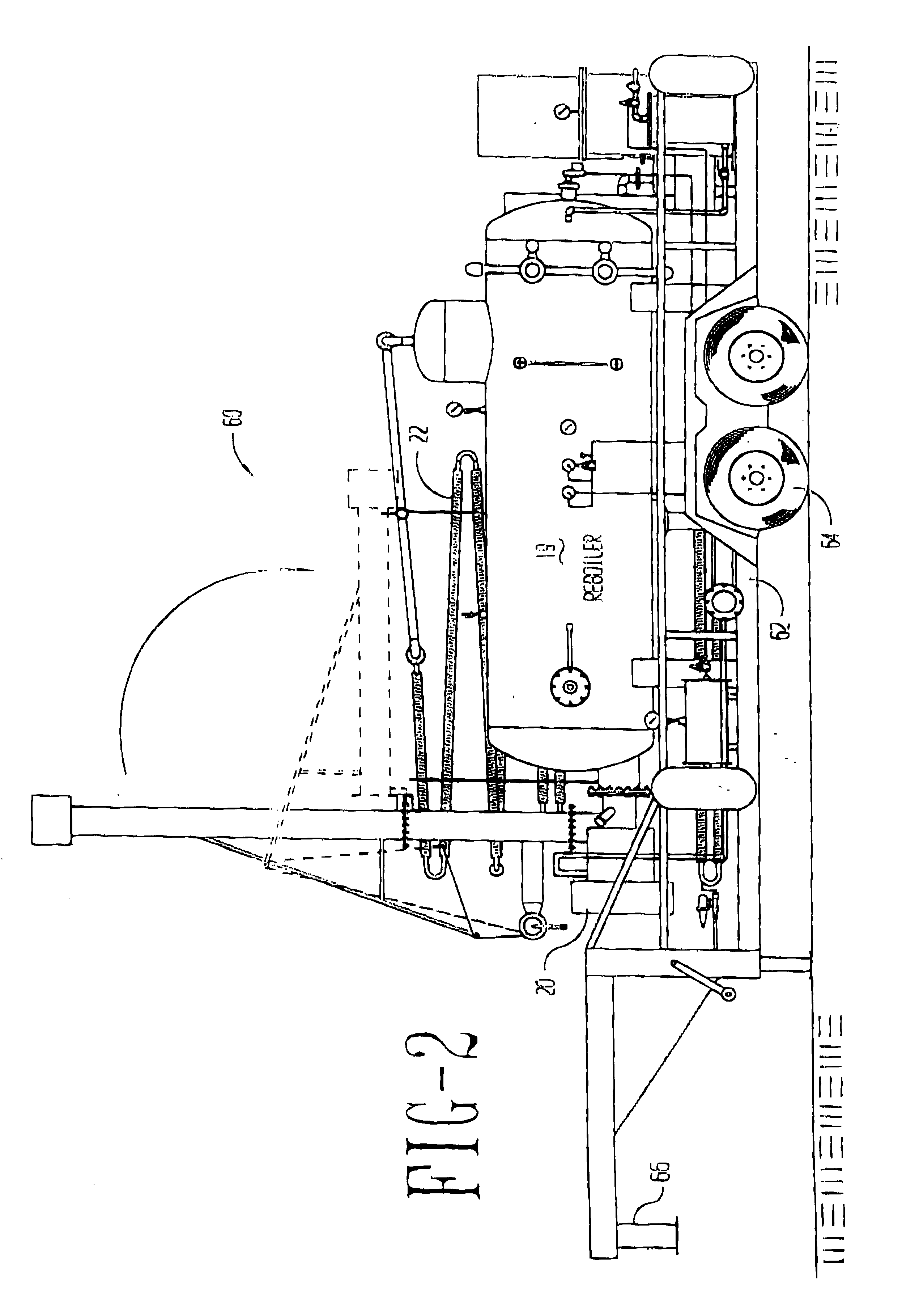Hazardous waste disposal
a waste disposal and hazardous technology, applied in vacuum distillation separation, oxygen compound purification/separation, separation processes, etc., can solve the problems of increasing erosion and corrosion, reducing pipeline efficiency, and increasing erosion and corrosion
- Summary
- Abstract
- Description
- Claims
- Application Information
AI Technical Summary
Benefits of technology
Problems solved by technology
Method used
Image
Examples
Embodiment Construction
)
When used with a natural gas dehydration plant this invention is designed to remove impurities from TEG.
Referring to FIG. 1 there is shown a schematic flow sheet showing the equipment for the glycol refining process embodying the present invention. The processing of the contaminated glycol can be conducted on a batch or semi batch process. Spent TEG is brought into the system by vacuum and / or gravity. The natural gas dehydration plant 8 is a source 9 of contaminated TEG for the refining equipment. The spent glycol enters the system in a conduit 10 that then passes through a check valve 11. The spent glycol then flows through the inlet control valve 12 and into the surge tank 13. The inlet control valve 12 is controlled by high and low level shutdowns located in vacuum reboiler or evaporator 19 and seal oil tank 31. When a low or high level shutdown occurs the inlet control valve 12 is shut and a temperature switch 49 cuts off the fuel supply to burner 20.
After the spent TEG is rece...
PUM
| Property | Measurement | Unit |
|---|---|---|
| temperature | aaaaa | aaaaa |
| temperatures | aaaaa | aaaaa |
| temperature | aaaaa | aaaaa |
Abstract
Description
Claims
Application Information
 Login to View More
Login to View More - R&D
- Intellectual Property
- Life Sciences
- Materials
- Tech Scout
- Unparalleled Data Quality
- Higher Quality Content
- 60% Fewer Hallucinations
Browse by: Latest US Patents, China's latest patents, Technical Efficacy Thesaurus, Application Domain, Technology Topic, Popular Technical Reports.
© 2025 PatSnap. All rights reserved.Legal|Privacy policy|Modern Slavery Act Transparency Statement|Sitemap|About US| Contact US: help@patsnap.com



